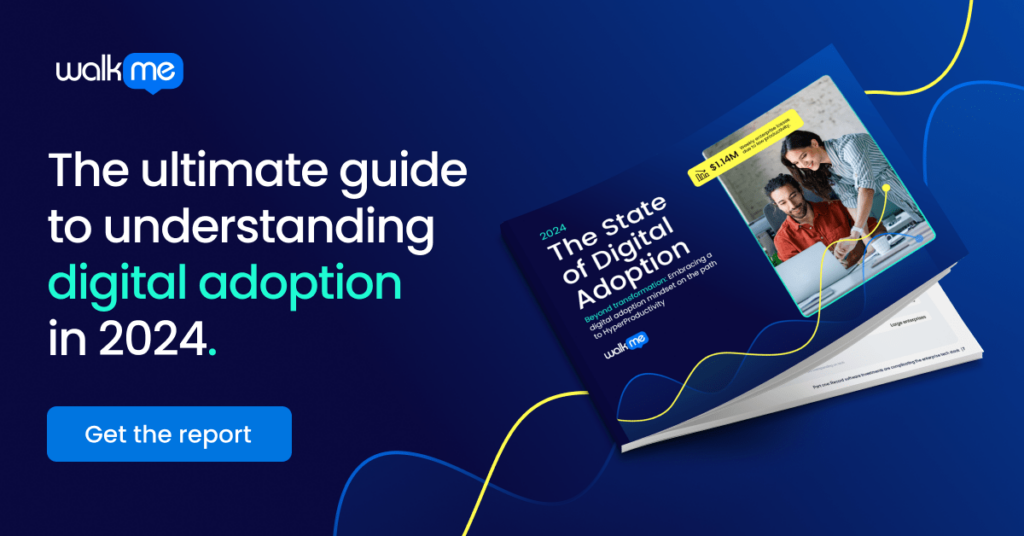WalkMe’s 2024 State of Digital Adoption report is here! This year’s report expands on previous editions by including survey findings from c-level executives and line of business workers, providing a comprehensive view of digital adoption’s impact on enterprises worldwide. Here, we’ll take a quick look at the report’s main findings.
To learn more, download the full 2024 State of Digital Adoption here.
The enterprise productivity paradox
Despite record software investments, a lack of end user adoption due to outdated change management programs is causing a significant percentage of digital transformation projects to fail. Furthermore, poor visibility into application adoption and how employees execute their workflows is leading to a proliferation of wasted spend and redundant software.
As a result, enterprises are confronting a productivity paradox, in which the money being spent on increasing output is actually causing a decrease in employee productivity. This amounts to losses of $1.14 million every week. This contributes to an unbelievable 38% of digital transformation efforts failing to meet their objectives, amounting to more than $12 million in wasted spend.
Confronting the productivity paradox
So, what can be done to confront the productivity paradox?
The first thing is to acknowledge that enterprises aren’t facing a technological deficiency issue; they’re facing a change management problem. 45% of employees say that their employer is introducing new technologies without considering how they will be used or what extra training employees will need, while 69% say that their last change management experience was negative.
Simply put, we impose an unsustainable amount of change on our people. There is friction between our personnel and our technology across various departments – Sales, HR, IT, and Finance. Broken workflows, reluctance in adopting new technology, or slow adoption rates have and will continue to result in costly consequences.
Next, enterprises need to learn how to take a mature approach to digital adoption. While the vast majority of organizations follow some digital adoption best practices, only 6% follow all. These elite digital adopters are seeing massive benefits that help them maximize employee productivity, digital investments, and application utilization.
The benefits of a mature digital adoption strategy
Elite digital adopters are seeing tangible benefits from their digital adoption efforts. These include 18% higher ROI from digital transformation projects, 23% reduced productivity costs, 30% higher application utilization rates, and savings of close to $5 million a month relative to enterprises without a mature approach to digital adoption.
They are also better placed to reach a state of HyperProductivity, an aspirational state that involves expanding digital adoption best practices beyond individual roles or departments to encompass the entire organization, resulting in a more holistic and impactful transformation.
To learn more about what it means to embrace digital adoption best practices and the benefits HyperProductivity can have for your enterprise, download the 2024 State of Digital Adoption report today.


